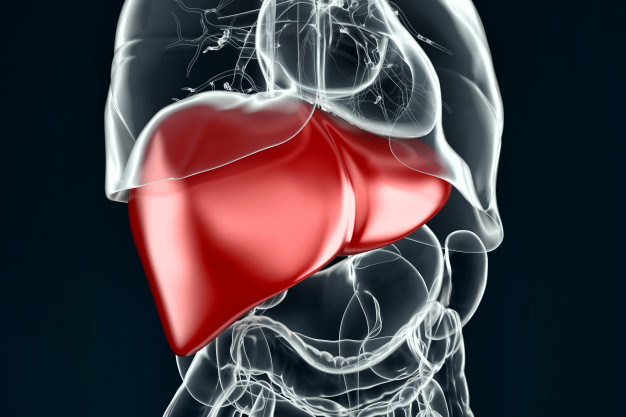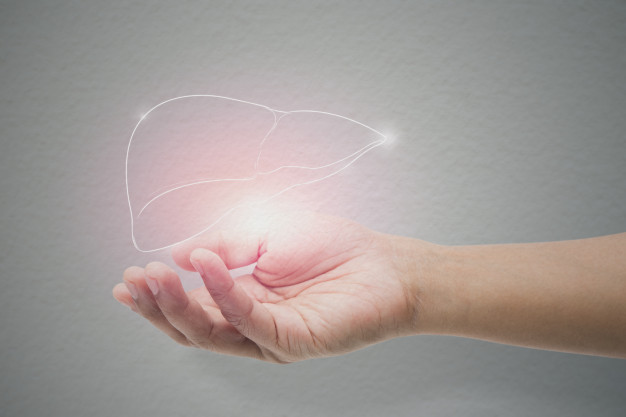The liver is the largest internal organ. It is reddish-brown in colour and weighs approximately three pounds (in the adult male) and is about the size of a football.
Liver is located behind the ribcage on the upper right side of the abdomen. The liver has the unique ability to restore its own tissue—as much as three-quarters of the liver can be lost, and the organ can grow back or expand to its original size within few weeks.

Functions of Liver:
The liver is responsible for some 500 bodily functions. It plays a role in digestion, sugar and fat metabolism, and the body’s immune resistance. It processes almost everything a person eats, breathes, or absorbs through the skin. The liver converts food into energy, stores nutrients, and produces blood proteins. The liver also acts as a filter to remove harmful substances from the blood. In developing foetus, blood cells are produced in the liver.
Common Liver diseases:
Liver disease can be caused by a variety of factors that damage the liver, such as viruses and alcohol use. Obesity is also associated with liver damage. Damage to the liver results in scarring (cirrhosis), which can lead to liver failure, a life-threatening condition.
Signs and symptoms of liver disease or damage:
- Skin and eyes that appear yellowish (jaundice)
- Abdominal pain and swelling
- Swelling in the legs and ankles
- Itchy skin
- Dark urine color
- Pale stool color, or bloody or tar-colored stool
- Chronic fatigue
- Nausea or vomiting
- Loss of appetite
Among various liver diseases, Viruses cause some of them, like hepatitis A, hepatitis B and hepatitis C. Others can be the result of drugs, poisons or drinking too much alcohol. If the liver forms scar tissue because of an illness, it’s called cirrhosis. High consumption of alcohol can lead to several forms of liver disease including alcoholic hepatitis, alcoholic fatty liver disease, cirrhosis, and liver cancer, Jaundice, or yellowing of the skin, can be one sign of liver disease.
With increased obesity and metabolic diseases like diabetes, leading to hepatitis and eventually cirrhosis is an emerging problem.
Liver cirrhosis is a condition in which chronic damage to the liver causes scar tissues to replace healthy liver tissues.
Vaccines against hepatitis A and B have helped prevent viral hepatitis, but the numbers of deaths caused are still on the rise.
Guide to a Healthy Liver
- Initial detailed evaluation with a liver specialist is essential to grade the disease and chalk out appropriate therapy.
- Regular liver function tests and follow up with your specialist is necessary every 1-3 months in early cirrhosis and 1-4 weeks in advanced cirrhosis. The exact interval between check ups will be decided by your liver physician depending upon your symptoms and severity of disease.
- Nutritious diet is essential for optimal liver function in presence of chronic liver disease. Contrary to popular belief, the digestion remains normal until very late stages of liver disease except in the presence of severe jaundice. Hence, the need for complete avoidance of fatty food and proteins in all forms of liver disease is a myth. This is not only unnecessary in most cases, but also harmful since it results in malnutrition, weight loss and faster deterioration in health.

